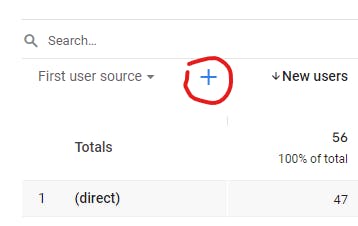Enhance Your Data Analysis Making Use Of Second Dimension in Google Analytics
Discovering the abilities of additional dimensions in Google Analytics opens up a world of possibilities for refining information evaluation. By layering extra dimensions onto primary data collections, a more elaborate story emerges, losing light on user interactions and performance indications.
Comprehending Secondary Measurements
In the realm of information analysis, a crucial facet to understanding is the idea of second dimensions and their significance in removing much deeper insights from Google Analytics records. Second dimensions in Google Analytics describe added parameters that can be included to the main measurement, enabling a more thorough analysis of data. By integrating second measurements, analysts can segment and filter information to uncover patterns, trends, and correlations that may not appear when checking out the information in its entirety. These secondary measurements can offer context and a more detailed understanding of customer habits, traffic resources, and various other key metrics tracked by Google Analytics.

Benefits of Using Secondary Measurements
When analyzing data in Google Analytics, the usage of additional dimensions offers very useful understandings right into individual habits and performance metrics. By including a second dimension to your main information, you can dig much deeper right into the features of your website site visitors and their communications. One of the key advantages of using second dimensions is the capacity to sector and compare information better. This division enables you to comprehend how various variables, such as demographics or website traffic sources, effect individual behavior and conversions (Secondary Dimension in Google Analytics).
Additionally, additional measurements help in determining patterns and correlations that might not be right away apparent when taking a look at the information alone. This deeper degree of analysis can uncover valuable information that can direct marketing techniques, web site optimization, and total business choices. Additionally, secondary dimensions improve the context of your main information, giving an extra extensive sight of customer involvement and performance metrics. Overall, using second measurements in Google Analytics can considerably improve the depth and top quality of your information evaluation, bring about more informed decision-making and boosted end results.
Just How to Add Additional Dimensions
By incorporating second measurements in Google Analytics, users can acquire deeper understandings into their data analysis process, allowing for even more detailed assessment of individual habits and efficiency metrics. Adding second measurements is an uncomplicated procedure that can considerably boost the deepness of evaluation. When in the record, locate the "Additional measurement" tab over the data table.
Analyzing Data With Secondary Measurements
Making use of secondary dimensions in data evaluation gives an extra extensive understanding of customer habits and efficiency metrics. By including a second measurement to your primary data embeded in Google Analytics, you can dig much deeper right into the qualities of your web site visitors and their interactions. For circumstances, integrating the main dimension of 'source/medium' with the additional measurement of 'touchdown web page' can expose which details web pages are bring in traffic from different resources, assisting you maximize these pages for much better interaction.

Basically, analyzing information with additional dimensions empowers you to get beneficial insights right into user habits, identify patterns, and make informed choices to improve the performance of your electronic homes.
Best Practices for Second Dimensions
In information analysis, including second dimensions effectively can dramatically improve the depth of understandings originated from metrics and individual actions patterns. When using second dimensions in Google Analytics or any kind of other logical tool, it is critical to follow best methods to guarantee the accuracy and significance of the information analysis.
One secret finest technique is to very carefully select additional measurements that enhance the key dimension being analyzed. Selecting additional measurements that supply added context or further segmentation can use a much more comprehensive understanding of the data. It is likewise important to prevent overcomplicating the analysis by including a lot of additional dimensions, which may result in confusion or dilution of insights.
Furthermore, it is suggested to trying out various mixes of key and second measurements to uncover new correlations and trends. Consistently improving the option and evaluating Discover More Here of additional measurements based on the certain objectives of the analysis can result in even more workable understandings. By adhering to these best methods, information experts can take advantage of additional dimensions efficiently to boost the total information analysis process and decision-making capacities.

Final Thought
Finally, including second measurements in Google Analytics is necessary for a comprehensive information evaluation strategy. By leveraging second dimensions alongside primary ones, analysts and online marketers can uncover valuable understandings and connections that can educate decision-making and maximize digital marketing strategies. Comprehending just how to successfully use secondary measurements and adhering to finest practices will allow professionals to extract significant data and boost their overall performance metrics.
Secondary measurements in Google Analytics refer to additional parameters that can be included to the primary dimension, permitting for a much more detailed evaluation of data. By including additional measurements, experts can sector and filter data to reveal patterns, trends, and relationships that could not be obvious when looking at the data as a whole. Integrating the primary measurement of 'source/medium' with the secondary measurement of 'landing page' can reveal which certain web pages are find more info drawing in website traffic from various sources, helping you enhance these pages for better involvement.
One key ideal technique is to meticulously select additional dimensions that enhance the primary dimension being assessed. By following these best methods, data analysts can take advantage of second dimensions effectively to improve the total data analysis procedure and decision-making capabilities.
Comments on “Secondary Dimension in Google Analytics: Ideal Practices and Tips”